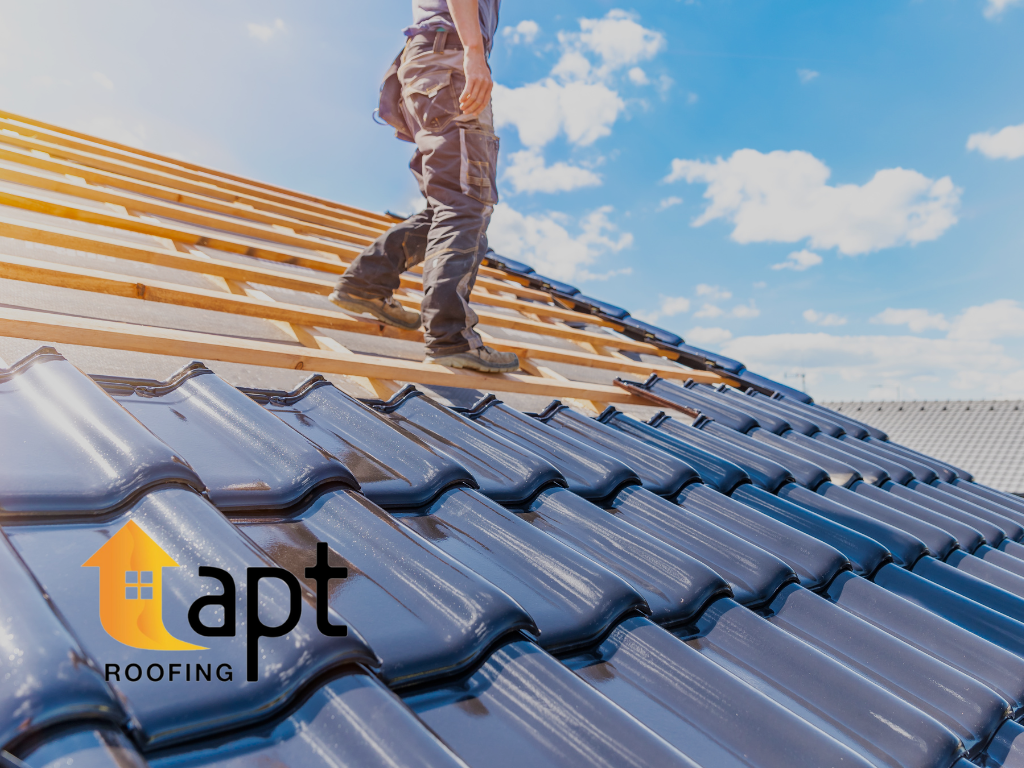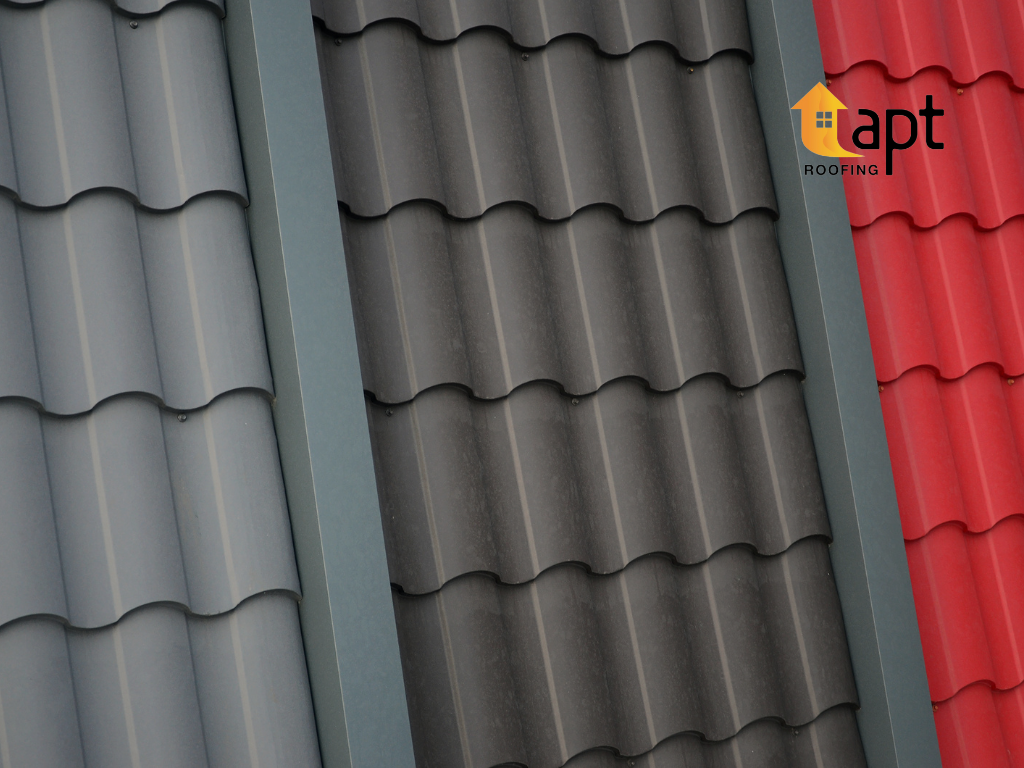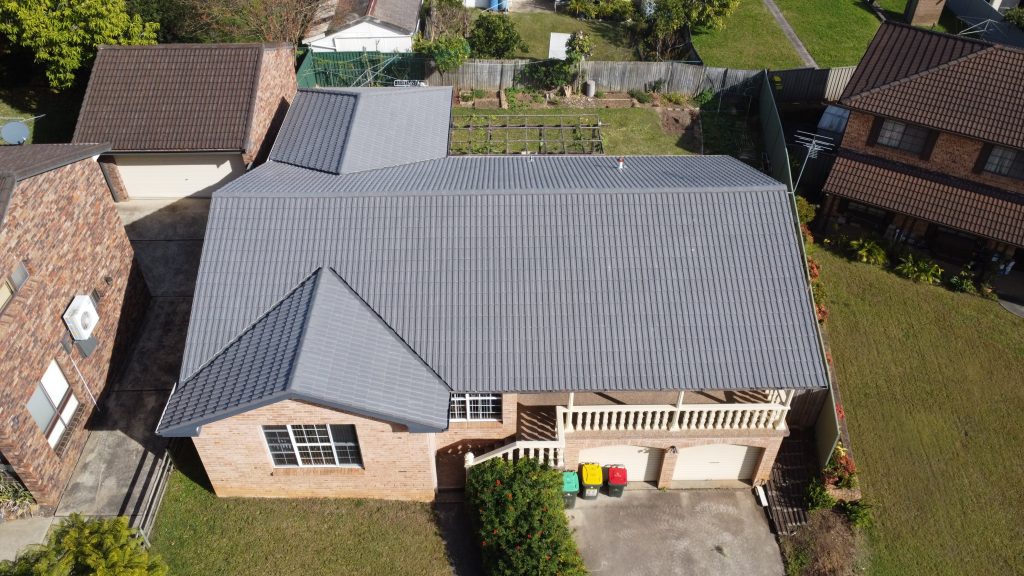Introduction
The roof, while often overlooked, is among the most crucial components of any home. Not only does it shield against harsh weather, but it also significantly influences the property’s energy efficiency and aesthetics.
This guide serves as an introduction to the basic principles of roofing, exploring its purpose, the variety of materials available, and their expected lifespans, providing homeowners with the knowledge necessary to make informed decisions about their roofs.
What Is the Purpose of Roofing?

Protection Against Elements
At its core, the primary function of a roof is to act as the first line of defense against natural elements. Whether it’s the blistering heat of the sun, the relentless pressure of a snowstorm, or a torrential downpour, a roof withstands significant natural forces.
Its design and construction are pivotal in preventing water intrusion, thereby protecting the home from potential issues like structural deterioration, mold, and mildew. Moreover, in areas prone to wildfires or extreme weather, a roof must also provide a necessary level of fire resistance and be able to withstand severe wind forces.
Contribution to Structural Integrity
Beyond elemental protection, a roof is integral to a home’s structural integrity. A well-constructed roof supports the weight of itself and withstands additional loads, including snow and maintenance workers’ traffic, without buckling or compromising the home’s structure. Its design, which includes features like the slope and support systems, plays a role in how weight and force are distributed throughout the building.
Consequently, the roof is a key player in maintaining the building’s stability, preventing potential issues like uneven weight distribution that could lead to structural problems or even collapse.
Insulation and Ventilation
The role of a roof extends into the realms of insulation and ventilation, significantly impacting a home’s energy efficiency and livability. A well-insulated roof prevents heat loss during cooler months and resists heat gain during warmer periods, contributing to a comfortable indoor environment and potentially lowering energy costs. Simultaneously, proper roof ventilation is crucial.
It allows for air circulation, preventing the buildup of warm, moist air that can lead to insulation damage, decreased energy efficiency, and potentially, structural deterioration. The balance between insulation and ventilation in roofing is hence essential in maintaining a healthy, energy-efficient home environment.
What Are the Different Types of Roofing Materials?

In the diverse world of roofing, various materials have been adapted to meet different climatic conditions, aesthetic preferences, and budgetary needs. Understanding these materials is key to making an informed decision that suits your home’s specific requirements.
Asphalt Shingles
Asphalt shingles are the most prevalent roofing material used in residential homes due to their cost-effectiveness and ease of installation. Typically reinforced by fiberglass or organic materials, asphalt shingles can vary in color, durability, and warranty offerings. While they’re less expensive than other roofing options, they do have a shorter lifespan and can be prone to tearing in high winds or extreme weather conditions.
Metal Roofing
Metal roofing is celebrated for its exceptional durability, longevity, and energy efficiency. Available in styles that mimic shingles, tiles, or traditional panels, metal roofs can be produced from various materials, including aluminum, steel, copper, or zinc. They’re lightweight, recyclable, and can be more expensive upfront; however, their durability typically translates into a cost-effective choice over their long lifespan.
Wood Shakes and Shingles
Wood shakes and shingles offer a natural look with a lot of character, thanks to their variation in color, width, thickness, or cut of the wood. While wood shakes and shingles can be more expensive than asphalt and require regular maintenance to prevent decay or mold growth, they can provide natural insulation and are often manufactured from sustainable resources.
Slate Roofing
Slate roofing stands out for its natural appearance, fire resistance, durability, and longevity. Slate is one of the highest-cost options due to the materials themselves and the specialized installation required. However, its lifespan, often several times that of other roofing materials, can make it a cost-effective choice over time.
Comparison Table
| Material | Average Lifespan | Cost (per square foot) | Maintenance | Pros | Cons |
|---|---|---|---|---|---|
| Asphalt Shingles | 20 – 30 years | $3.50 – $5.50 | Medium | Affordable, easy installation | Shorter lifespan, less durable |
| Metal Roofing | 40 – 70 years | $5.50 – $12 | Low | Durable, low maintenance, eco-friendly | Higher upfront cost |
| Wood Shakes | 30 – 40 years | $6.50 – $11 | High | Natural insulation, aesthetic appeal | High maintenance, susceptibility to decay |
| Slate Roofing | 100+ years | $15 – $25 | Low | Long lifespan, fire-resistant | Expensive, heavy, specialized installation |
How Long Does Each Type of Roof Typically Last?
The lifespan of a roofing material is critically influenced by factors like the local climate, installation quality, and maintenance frequency. Below we detail the typical longevity you can expect from the materials discussed, under normal conditions:
Lifespan of Asphalt Shingles
Standard asphalt shingles are economical but tend to have a shorter lifespan, typically 20 to 30 years. Premium or architectural shingles can last a bit longer. Factors such as climate, weather events, and maintenance can significantly impact their durability.
Durability of Metal Roofs
Metal roofs have an impressive lifespan of 40 to 70 years, with materials like copper or zinc lasting even longer. They withstand extreme weather conditions excellently and usually require minimal maintenance, contributing to their longevity.
Longevity of Wood Shakes
With proper maintenance, wood shakes and shingles can last 30 to 40 years. This lifespan can be significantly shorter in climates that are very wet or humid, or if the roof doesn’t receive adequate maintenance.
Endurance of Slate Roofs
Slate is renowned for its longevity, with a well-maintained slate roof potentially lasting over 100 years. Its resistance to natural elements and durability make it an attractive, though expensive, long-term option.
Making an Informed Decision for Your Home
Understanding the fundamentals of roofing is not just a theoretical exercise; it’s an essential aspect of responsible homeownership. The roof, a critical structural component of any home, offers protection, contributes to the home’s energy efficiency, and plays a significant role in the property’s aesthetic appeal.
Making an informed decision about roofing materials involves considering their purpose, weighing the pros and cons of different types, and understanding the potential lifespan and cost of each.








